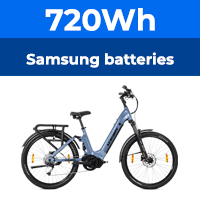Hi All.
I'm looking at replacing my Izip Trekking Enlightened with a Panasonic-based bike. I use it for commuting, about 6-7 miles each way.
Which to choose (assuming I can get my employers to help via the Cycle to work scheme)?
I've tried and liked the e-Motion, which seems very good value for money, but the Kalkhoff has rave reviews, is German, and has a wider range of frame size (I'm just over 6ft tall).
How do I decide - coin toss?
All advice and opinions gratefully received.
Thanks, Hugh
I'm looking at replacing my Izip Trekking Enlightened with a Panasonic-based bike. I use it for commuting, about 6-7 miles each way.
Which to choose (assuming I can get my employers to help via the Cycle to work scheme)?
I've tried and liked the e-Motion, which seems very good value for money, but the Kalkhoff has rave reviews, is German, and has a wider range of frame size (I'm just over 6ft tall).
How do I decide - coin toss?
All advice and opinions gratefully received.
Thanks, Hugh







